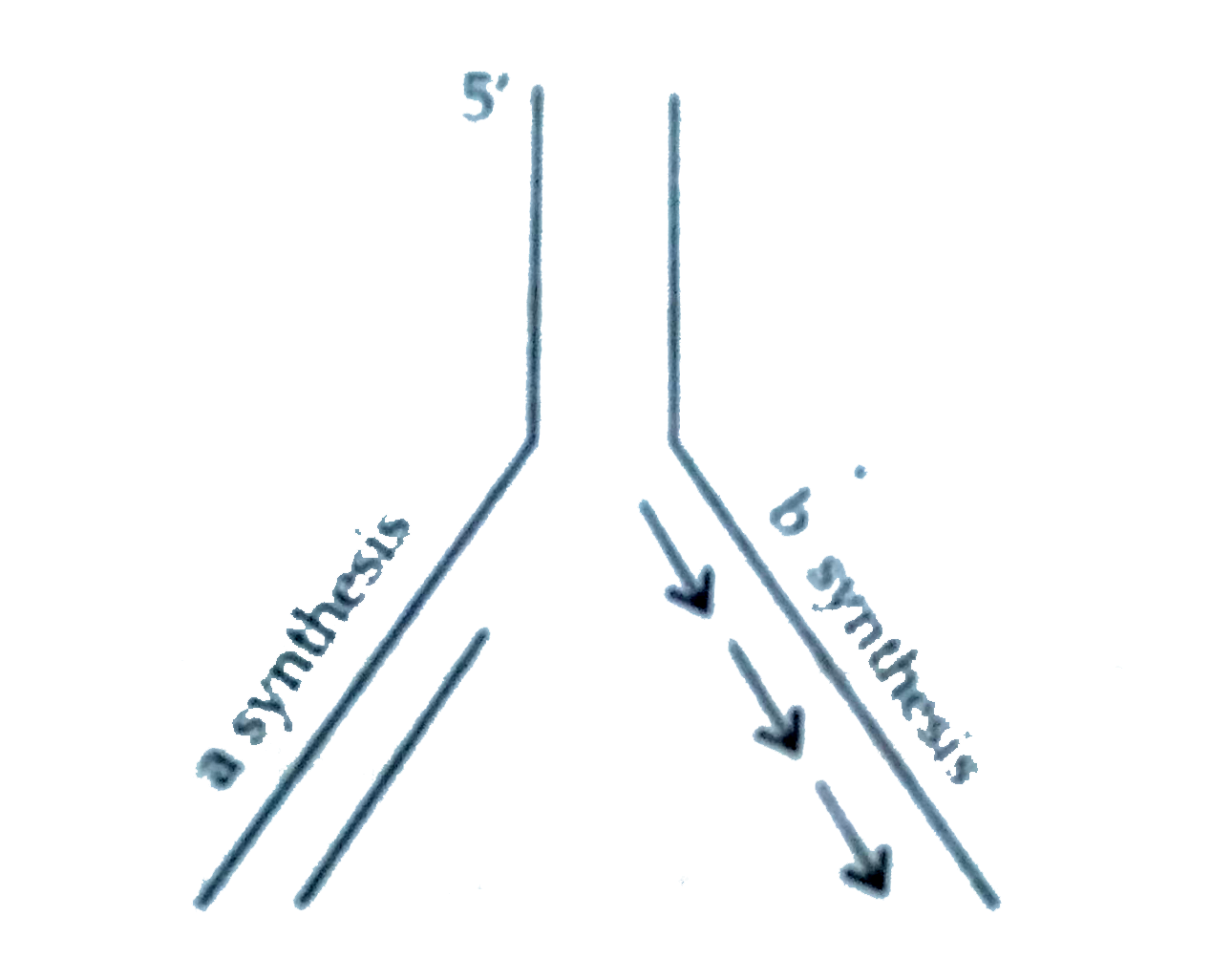Replication fork is -
Large opening of the DNA helix
Small opening of the DNA helix
Tightly coiled part of DNA helix
Loosely coiled part of DNA helix
The correct Answer is:B
Step by step video, text & image solution for Replication fork is - by Biology experts to help you in doubts & scoring excellent marks in Class 12 exams.
Similar Questions
(a) Why does DNA replication occur in small replication forks and not in its entire length ?
(b) why is DNA replication continuous and discontinuous in a replication fork ?
(c) State the importance of origin of replication in a replication fork.View SolutionName the types of synthesis ‘a’ and ‘b’ occurring in the replication fork of DNA as shown below:
 View Solution
View Solution
Knowledge Check
- Question 1 - Select One
Proteins that hep to open up DNA helix in front of the replication fork in prokaryotes are
AtopoisomerasesBunwindases (helicases)Cpolymerase 1Dexonucleases and endocuclease - Question 2 - Select One
When cell has stalled DNA replication fork, which check-point should be predominantly activated?
AMBBoth G2/M and MCG1/SDG2/M - Question 3 - Select One
There are special proteins that help to open up DNA double helix in front of the replication fork. These proteins are :
ADNA ligasBDNA gyraseCDAN polymerase IDNone of these
Draw a labelled schematic sketch of replication fork of DNA. Explain the role of the enzymes involved in DNA replication
View SolutionDraw a labelled schematic sketch of replication fork of DNA. Explain the role of the enzymes involved in DNA replication.
View SolutionWhen cell has stalled DNA replication fork, which check-point should be predominantly activated?
View SolutionWhen cell has stalled DNA replication fork, which check-point should be predominantly activated?
View SolutionThe proof for semiconservative mode of DNA replication was First provided by Matthew Meselson and Franklin Stahl. Escherichia coli were the first organism to be used for this experiment and then it was done in with higher organisms such as plants and human cells. The process of DNA replication in terms of energy is a very expensive process. It involves the formation of a replication fork. Given below is a graph showing the percentage of Adenine in two different double stranded DNA.
DNA replication is often termed as a semi-discontinuous process because:View Solution

